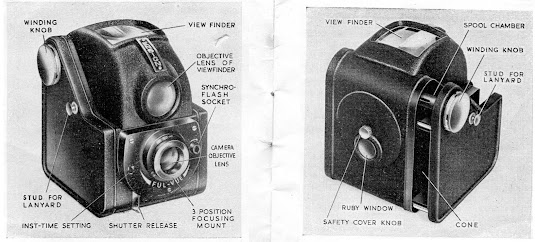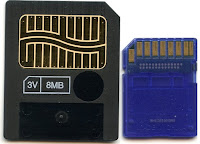Last month’s post about photographic lenses and extension tubes set me thinking about the cameras I’ve used over the years. Some were also in the loft.
1950s
The Ensign took most of our family photographs until 1962 when I received a Kodak Brownie Starmite camera for Christmas and became the family photographer. This used smaller 127-sized frames (40mm square), also 12 per roll. Pictures from both the Ensign and the Starmite have appeared many times on this blog, especially indoor flash.
1974
After starting work I wanted a 35mm single-lens reflex colour slide camera. One of the most economical to buy was the Russian Zenith E. It cost £33 from York Camera Centre in January, 1973.
Comparing the quality of the Zenith images with the Ensign and Starmite negatives, you can see why it was cheap. I would have been better with something slightly more expensive, perhaps Pentax or Praktica, but the Zenith was fairly robust and I used it into the nineteen-nineties. It survived hours in rucksacks including two weeks backpacking in Iceland, and once rolled several hundred feet down a mountainside in Switzerland. Unfortunately, the fabric shutter is now torn beyond repair. As the lenses have gone to the charity shop, the camera body might as well go for metal recycling.

One nice touch was that the Zenith came with a free book, “Discover Rewarding Photography: the Manual of Russian Equipment”, which, despite its name, contained helpful hints and useful information.
1994
2001
The software for transferring images from the memory cards was awkward. You couldn’t just stick it into a computer slot like now because the ‘Camedia’ cards were enormous – seen here beside a standard SD card for comparison. I bought additional 16MB cards to take more photographs. A hundred was luxury after 35mm film. The camera was also a little heavy because it used four AA batteries. It still works but is worth at most £20 on ebay. Should it go to the electrical equipment recycling skip?
With two young children the Olympus was used a lot, but after a few years I noticed that the images had a small number of blank pixels. It seemed time to upgrade.
2006
Technology was advancing rapidly and getting cheaper too. My 7.1 megapixels Canon Digital Ixus 70 cost £169.99 in April 2006, and I still use it today. It has a similar spec. to the Olympus: a 3x optical zoom (35-105mm), a macro function and built in flash, but also an extensive range of image settings and unlimited movie time with sound. Mine is set to 3072 x 2304 pixels at 180 dots per inch which creates jpg images of 3.5MB. Even a ‘small’ 4GB SD card stores loads.
You can get much higher spec. cameras now, even on phones, but this is fine for most purposes. However, one might say that it isn’t as much fun, and doesn’t have the same mystique as the Zenith.
Not wanting to disappoint the technical amongst us, here are links to the Ensign Ful-Vue, Zenith E and Pentax Espio instruction booklets and manual.









